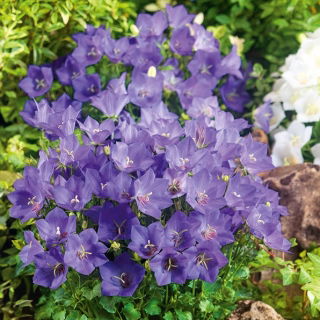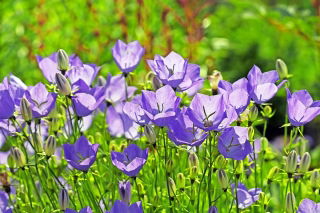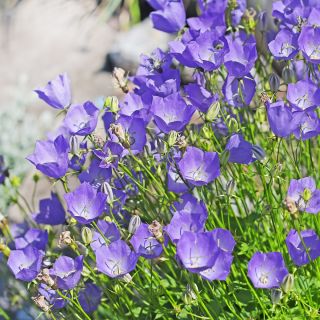- US Dollars ($)
- Euro (€)
- GB Pound (£)
- Chinese Yuan (元)
- Swedish krona (kr)
- Russian ruble (₽)
- Hong Kong dollar (HK$)
- Norwegian krone (kr)
- Indian rupee (₹)
- New Taiwan dollar (NT$)
- Danish krone (kr)
- Hungarian forint (Ft)
- Saudi riyal (SR)
- Bulgarian lev (лв)
- Czech koruna (Kč)
- Israeli shekel (₪)
- Indonesian rupiah (Rp)
- Japanese yen (¥)
- Korean won (₩)
- Malaysian ringgit (RM)
- Romanian leu (leu)
- Swiss franc (Fr.)
- Serbian dinar (din)
- Vietnamese đồng (₫)
- Ukrainian hryvnia (₴)
- Turkish lira (₺)
- Thai baht (฿)
- CAD Dollars ($)
- English
- German - Deutsch
- French - Français
- Spanish - Español
- Italian - Italiano
- Swedish - Svenska
- Russian - Русский
- Norwegian - Norsk
- Danish - Dansk
- Nederlands
- Estonian - Eesti keel
- Finnish - Suomalainen
- Hungarian - Magyar
- Latvian - Latviešu valoda
- Lithuanian - Lietuvių
- Portuguese - Português
- Chinese - 中文
- العربية - Arab-c
- Bulgarian - български
- Czech - Čeština
- Greek - Ελληνικά
- پارسی - Persian
- עברית - Abrit
- Croatian - Hrvatski
- Indonesian - Bahasa Indonesia
- Japan - 日本語
- Korean - 한국어
- Malay - Melayu
- Romanian - Română
- Slovak - Slovák
- Slovenian - Slovenščina
- Serbian - Српски
- Thai - ไทย
- Turkish - Türkçe
- Ukrainian - Українська
- Vietnamese - Tiếng Việt
- Hindi - हिंदी
- Categories
-
Seeds
-
Vegetable Seeds
-
Flower Seeds
-
- Ageratum, Flossflower seeds
- Alyssum seeds
- Amaranth Seeds
- Aquilegia, Columbine seeds
- Aster seeds
- Aubrieta Seeds
- Begonia seeds
- Bellis perennis, Daisy seeds
- Californian Poppy Seeds
- Campanula, Bellflower seeds
- Celosia, Cocksbomb seeds
- Centaurea, Cornflower seeds
- Chrysanthemum, Painted Daisy seeds
- Coleus seeds
- Convolvulus seeds
- Coreopsis seeds
- Cosmos seeds
-
- Datura seeds
- Dianthus, Carnation seeds
- Echinacea, Coneflower seeds
- Flower seed mixtures
- Forget me not seeds
- Foxglove seeds
- Gaillardia Seeds
- Gazania seeds
- Geranium, Pelargonium seeds
- Godetia seeds
- Gourd, Ornamental squash seeds
- Gypsophila, Baby's Breath seeds
- Hollyhock seeds
- Impatiens seeds
- Ipomoea, Morning glory seeds
- Calabash, Bottle Gourd seeds
- Larkspur, Delphinium seeds
-
- Limonium, Statice seeds
- Lobelia seeds
- Lupin, Lupine seeds
- Lychnis, Catchfly seeds
- Mallow Seeds
- Marigold, Tagetes seeds
- Milkweed Seeds
- Nasturtium seeds
- Nemesia seeds
- Nepeta, catmint seeds
- Nicotiana, Ornamental Tobacco seeds
- Nigella, Love in a mist seeds
- Pansy seeds
- Petunia and Surfinia seeds
- Phlox seeds
- Poppy seeds
- Primula, Primrose seeds
-
- Red Valerian, Centranthus Seeds
- Ricinus, Castor bean seeds
- Runner bean seeds
- Safflower seeds
- Salvia, Ornamental sage seeds
- Snapdragon Seeds
- Stock seeds
- Strawflower, Golden everlasting seeds
- Sunflower seeds
- Sweet pea seeds
- Tunbergia, Black-eyed Susan Vine seeds
- Verbascum, Mullein seeds
- Verbena seeds
- Veronica, Speedwell seeds
- Viola, Violet seeds
- Zinnia seeds
-
- Herb Seeds
- Sprouting Seeds
-
Flower Bulbs
-
Garden Equipment
-
At home
- Around home
-
Fertilizers
-
- All-purpose fertilizers
- Autumn and winter fertilizers
- Blueberry fertilizers
- Boxwood fertilizers
- Bulb plants' fertilizers
- Grass and lawn fertilizers
- Citrus plant fertilizers
- Compost
- Conifer fertilizers
- Dolomite and lime fertilizers
- Dry powder fertilizers
- Fertilizers for balcony and terrace plants
- Fertilizers for moss-infected lawns
- Fertilizers in pump sprayers
-
- Fertilizers in watering cans
- Fertilizers sticks
- Fertilizers with leaf shine
- Flowering plant fertilizers
- Fruit fertilizers
- Fruit tree fertilizers
- Garden plant fertilizers
- Gel fertilizers
- Geranium fertilizers
- Green plant fertilizers
- Herb fertilizers
- Home plant fertilizers
- Hydrangea fertilizers
- Lavender fertilizers
-
The Tussock Bellflower (Campanula carpatica) is an exceptionally charming perennial, perfect for rock gardens, slopes, borders, and even pots. It features large, bell-shaped flowers in a striking blue-violet hue that capture attention and add a unique charm to any space. This compact plant forms low, densely-leaved mounds, reaching a height of approximately 20 cm. Its form makes it an excellent companion to a variety of plants, creating stunning arrangements.
Sowing
The Tussock Bellflower can be cultivated through direct sowing into the ground or under cover. The seeds are small, so care should be taken to sow them gently into the soil. A light substrate is recommended to facilitate germination.
Sowing Depth
The seeds of the Tussock Bellflower should be planted at a depth of about 0.3 cm. This is the optimal depth to ensure adequate moisture access while allowing young shoots to develop freely above the surface.
Direct Sowing Period
When is the best time to sow Tussock Bellflower seeds directly into the ground? The optimal period is May and June. During this time, the soil is warm enough to promote quick germination.
Sowing Period Under Cover
When should you sow Tussock Bellflower seeds under cover? May and June are also favourable for this process, offering young plants the best start before transplanting them to a permanent position in the garden.
Planting Time
The ideal time for planting the Tussock Bellflower is from July to September. This allows the plant to establish well before winter. Choose sunny or lightly shaded positions for best results.
Plant Spacing
When planting the Tussock Bellflower, maintain a spacing of 20x30 cm. This distance allows the plants to spread freely and ensures access to light and air.
Companion Planting
The Tussock Bellflower pairs well with other rock garden plants and perennials with similar soil requirements. It blends beautifully with plants having contrasting flower colours, allowing you to create harmonious compositions.
Site Conditions
The Tussock Bellflower thrives in well-lit locations, though it also tolerates partial shade. The soil should be well-draining, moderately moist, and nutrient-rich. Avoid waterlogged areas that could lead to root rot.
Growing Tips
For successful cultivation of the Tussock Bellflower, regular watering is crucial, especially during dry periods. Removing spent flowers encourages prolonged blooming. The plant is frost-resistant, but in harsh winters, it is advisable to protect it with a layer of mulch.
Plant Height
The Tussock Bellflower reaches a maximum height of about 20 cm, making it an excellent choice for border plantings and rock gardens.
Flowering Period
The Tussock Bellflower blooms from June to September, providing a long-lasting decorative effect. The flowers are not only beautiful but also attract pollinators.
Usage
With its aesthetic appeal and modest requirements, the Tussock Bellflower is perfect for home gardens, balconies, and terraces. It can be used as a ground cover plant or in mixed compositions with other perennials.
Resistance to Diseases
The Tussock Bellflower is characterised by good disease resistance, making it an easy-to-grow plant with minimal need for chemical protection.
Good to Know
Remember that the Tussock Bellflower is a perennial plant that becomes more beautiful each year. Regular pruning and removal of spent flowers support its healthy growth and prolonged flowering.
Why Buy from Garden Seeds Market
Purchasing seeds from Garden Seeds Market guarantees the highest quality and satisfaction. The seeds are carefully selected and rigorously tested for quality, ensuring excellent germination capacity. Additionally, with fast delivery and numerous promotions, shopping at Garden Seeds Market is not only pleasant but also advantageous.
The package contains 0.3 g of seeds. The packaging includes information on cultivation guidelines and the sow-by date.
New


My account
Store
Customer information
Information

© -2025 Gardenseedsmarket.








